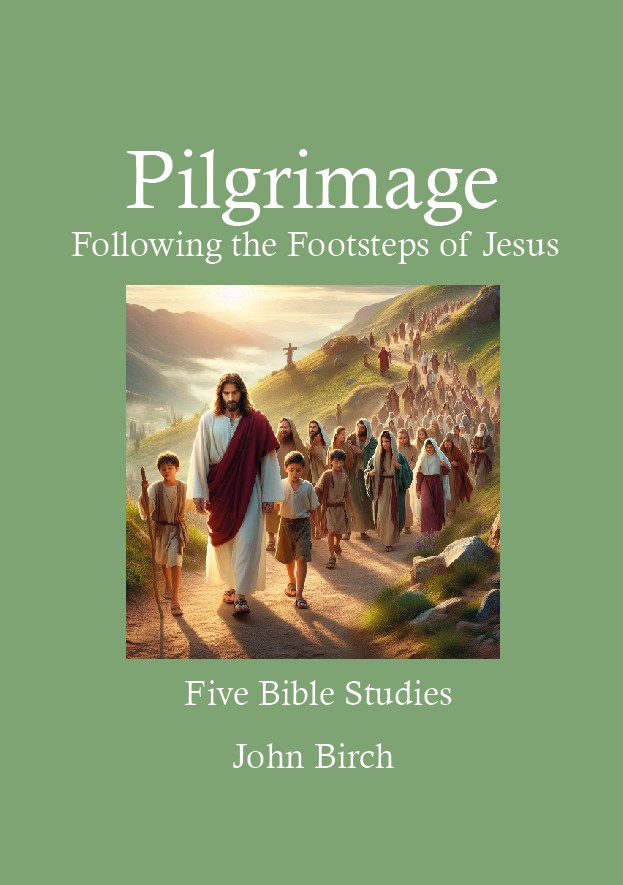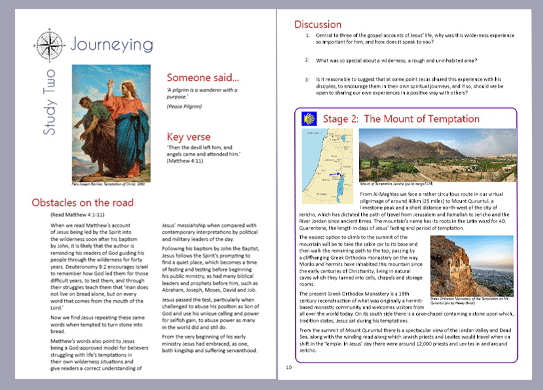 Faith & Worship
Faith & Worship
The word ‘pilgrimage’ can mean different things to different people. Some may find, within a period of reflection away from their everyday lives, a way of understanding themselves better, and seeing their relationships, health, hopes and anxieties in a new light perhaps. If looked at from a spiritual standpoint, for those undertaking a pilgrimage it is generally a journey to a holy place, which may lead to a time of spiritual refreshment, and from which the pilgrim returns home to continue their everyday walk of faith.
There are, of course, many destinations and pilgrimage trails throughout the world, each with their own spiritual and historical significance. Wherever we live, it is possible to take time out of our daily routine and associated stress, and connect with both God and our inner self, be it at a site connected directly with Jesus’ life, one where healing miracles have been recorded, or simply somewhere quiet where time can be spent in contemplation. Christian pilgrimages have diverse themes, each resonating with different aspects of faith and devotion. Examples might be…
1. Penance and Atonement: Historically, many pilgrims travelled as a form of penance, seeking forgiveness for their sins. This theme still resonates, especially during Holy Week in places like Rome and Jerusalem.
2. Healing: Sites like Lourdes in France and Fatima in Portugal draw pilgrims seeking physical and spiritual healing, inspired by reported miracles and appearances of the Virgin Mary.
3. Devotion to Saints: Many pilgrimages are centred around the tombs and relics of saints. Santiago de Compostela in Spain is a major site where pilgrims honour Saint James the Great.
4. Connection to Jesus's Life: The Holy Land remains a key destination, where pilgrims visit places associated with Jesus’s birth, ministry, death, and resurrection, such as Bethlehem, Nazareth, and Jerusalem.
5. Marian Pilgrimages: Devotion to Mary leads pilgrims to various Marian shrines, including Guadalupe in Mexico and Medjugorje in Bosnia and Herzegovina, where apparitions are said to have occurred.
6. Spiritual Renewal: Some pilgrimages are about personal spiritual growth and renewal, like walking the Camino de Santiago. The journey itself, with its physical and contemplative aspects, is part of the spiritual experience.
Christian pilgrimage has its origins in the very earliest days of Christianity, probably with Helena, the mother of Constantine the Great, and encouraged by church fathers like Saint Jerome. In the 4th century, after the Edict of Milan in 313 AD, Christianity was legalized in the Roman Empire, giving a significant boost to pilgrimages, mainly to sites associated with Jesus and the Apostles, Saints and Martyrs.
As Christianity spread, the concept of pilgrimage evolved. By the medieval period, other sites gained prominence. Rome became a significant destination, with the tombs of Saints Peter and Paul drawing pilgrims from all over Europe. Santiago de Compostela in Spain also rose to prominence in the 9th century, with the shrine of Saint James the Great.
Pilgrimage during the Middle Ages was not just about religious devotion; it was also a penance, a form of atonement for sins. It wasn't without its perils -pilgrims faced dangerous journeys, with bandits and harsh conditions. But the spiritual rewards, both in this life and the next, were deemed worth the risk.
In the Renaissance, pilgrimage declined due to the Reformation. Protestants, including Martin Luther, criticized practices associated with pilgrimage, considering them corrupt and superstitious. Large amounts of money were being made from offering hospitality to pilgrims at vastly inflated rates. Nonetheless, the Catholic Church defended pilgrimage, leading to a revival during the Counter-Reformation.
In time the sites associated with the Celtic saints of the 7th and 8th centuries, Iona, Crouagh Patrick, Lindisfarne and others became places of pilgrimage as people sought contact with the great names of Celtic Christianity.
In the modern era, pilgrimage remains a key aspect of Christian practice, and the advent of modern transportation has made these journeys accessible to more people. And here we are, with pilgrimage adapting to the 21st century. Digital pilgrimages have emerged, where people engage in virtual tours of sacred sites. Yet, the essence remains the same: a journey of faith, devotion, and spiritual growth.
(image at top is Canterbury Pilgrims by Thomas Stothard, 1755 1834, Source Wiki Commons images )
There are, of course, many destinations and pilgrimage trails throughout the world, each with their own spiritual and historical significance.
And here we are, with pilgrimage adapting to the 21st century. So, here's a simple 'virtual pilgrimage' where do don't even have to get the walking boots out! Yet, the essence remains the same: a journey about faith, devotion, and spiritual growth as we follow Jesus' footprints via some famous pigrimage sites.
There's five stages to our pilgrimage, plenty of discussion questions as well as notes and space for thought and prayer. Individual studies will copy onto 2 double sides of A4 paper for ease of use or are easy to view on mobile devices.

Sample study - download as a pdf
All Lent studies are £3.49 (or US$4.55)

©John Birch · Prayers written by the author may be copied freely for worship. If reproduced elsewhere please acknowledge author/website
Privacy Policy · Links · Author · Donate